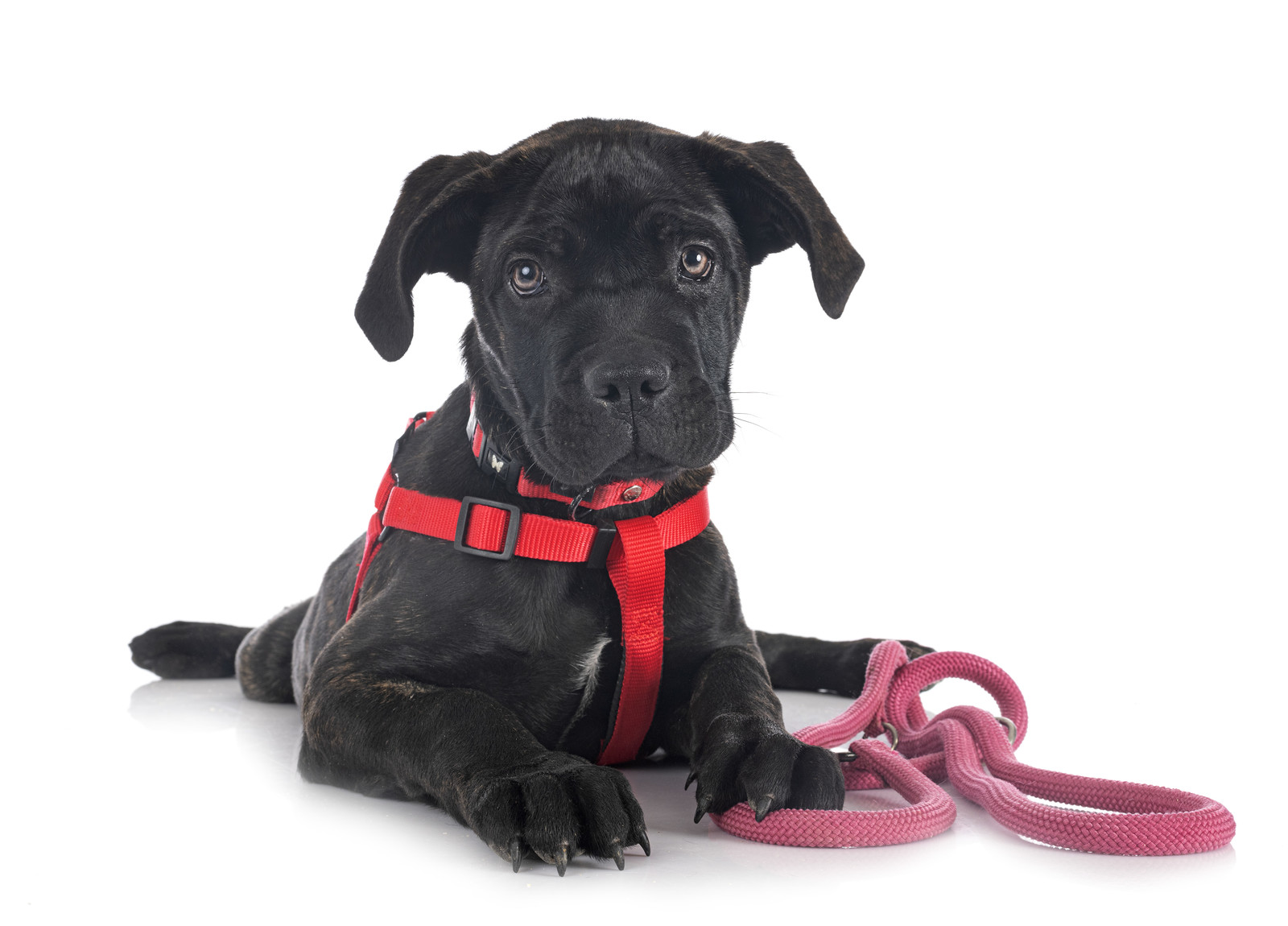Barks Blog
The Harness Is Coming – Run for the Hills!

I often wonder why some of us expect our dogs to miraculously accept collars, harnesses, leashes, and the like. After all, dogs are not born with these alien contraptions attached to their person!
But some of this gear must feel restrictive, worrying, anxiety-provoking, or even potentially painful. Especially without careful prior desensitization.
Which Dog Gear and Why?
There are many different bits of paraphernalia available out there right now, so think seriously about what you need and why you need it. Most importantly, think how it benefits your dog, not the latest fashion craze.
When I advise new puppy owners, I always, always state that ‘simplest is best.’ A collar and ID tag is required by UK law for starters but I will always advise beginning with a soft, flat collar. If there is any hint of leash tugging when the pup begins training, I will suggest introducing a harness. This will usually be a front ring harness with a double-ended leash.
I also stress that the point of the harness is to facilitate the pup’s training, not replace it. The harness also ensures that there is no pressure on the puppy’s sensitive tracheal area.
Headcollars and Retractable Leashes
In my opinion, at this early stage of prior training with a very young pup (12 weeks or so), I would not advocate a headcollar. Personally, I prefer flat, non-retractable long lines and simple non-fussy fixed leashes.
I often find that young puppies (especially more sensitive individuals) can be frightened by the noise of retractable leashes. These types of leashes can also cause pretty bad rope burn on your hands if you grab the cord when the dog is moving. And when dogs become weightier, they can easily snap the mechanism.
When you’re teaching things like ‘stay’ or ‘recall,’ you might want to drop the leash or have a longer line trail your dog, and you just can’t really do this with a retractable unless you want a huge ball and chain dragging along the ground behind him making a noise and bashing his legs.
I also don’t think you really have great control with retractables. It’s definitely harder to reel your dog in quickly when you really need to. Yes, of course, when you’re using a long line you can get pretty tangled up and wrapped around trees if you’re not careful, but there is a knack to it. And you still have much firmer control than with a retractable leash.
Introduce New Equipment Carefully
I really don’t know how many times I’ve heard people say, ‘My dog runs for the hills when I get the harness out’!
In my experience, many dogs are really not comfortable at all with harnesses. So I would suggest you choose a harness that opens completely and does not require your dog to place his head through the head hole as this can be quite anxiety-provoking.
Do make sure also that you smooth any skin or long hair underneath the harness, especially by the front legs or buckles as this can snag and be painful.
Quickly dogs can associate the harness with feeling uncomfortable. If your dog balks, do not pull the harness over his head as this may cause it to rub under his front legs and be uncomfortable – again, another common reason why he will not look forward to having it put on again!
We often rush dogs when they’re first adapting to new equipment – we don’t take the time, which can ultimately have negative results. So instead, choose a moment when you really have the time to practice putting on the collar, harness, and leash and taking them off again just for a brief moment.
Desensitizing New Gear
Calm desensitization is key. Here’s a typical example:
- Leave the gear on the floor for the dog to sniff and investigate.
- Practice clicking the buckles (many dogs are unsure of the sound of the plastic buckles clicking when they are around the neck/body).
- Stroke the dog with the gear all over his body.
- Open the collar/harness completely so it’s lying flat over the dog while he investigates a stuffed Kong or has access to a LickiMat or similar at the same time.
- With the collar/harness adjusted so it’s oversize, fasten the collar very loosely – or just fasten the collar part of the harness – and continue allowing the investigate the Kong/LickiMat.
- Practice fastening the tummy part of the harness, still using the Kong/LickiMat.
- Practice playing games/have the dog eat his dinner wearing the gear and gradually build up the wearing time.
- Attach the leash to the harness but do not hold it – allow the dog to drag it around or play games whilst wearing it.
- Progress to holding the leash but not taking up contact. Gradually progress to increasing contact and eventually following and walking your dog around the house and garden. If necessary, lure with a toy or treats.
You may also need to start with simply getting your dog to be comfortable about having their body touched in the areas a collar or harness will have contact. So you can start with pressure touch in these areas when the dog is calm and relaxed, prior to the desensitization approach above.
If you start early and take baby steps as outlined above and make sure you focus on your dog’s responses so you don’t move forward too quickly, you will be able to quietly and carefully introduce the equipment you wish to use. This way, your dog should have no problem with his gear, ultimately setting you both up for success.
Further reading about dog harnesses:
